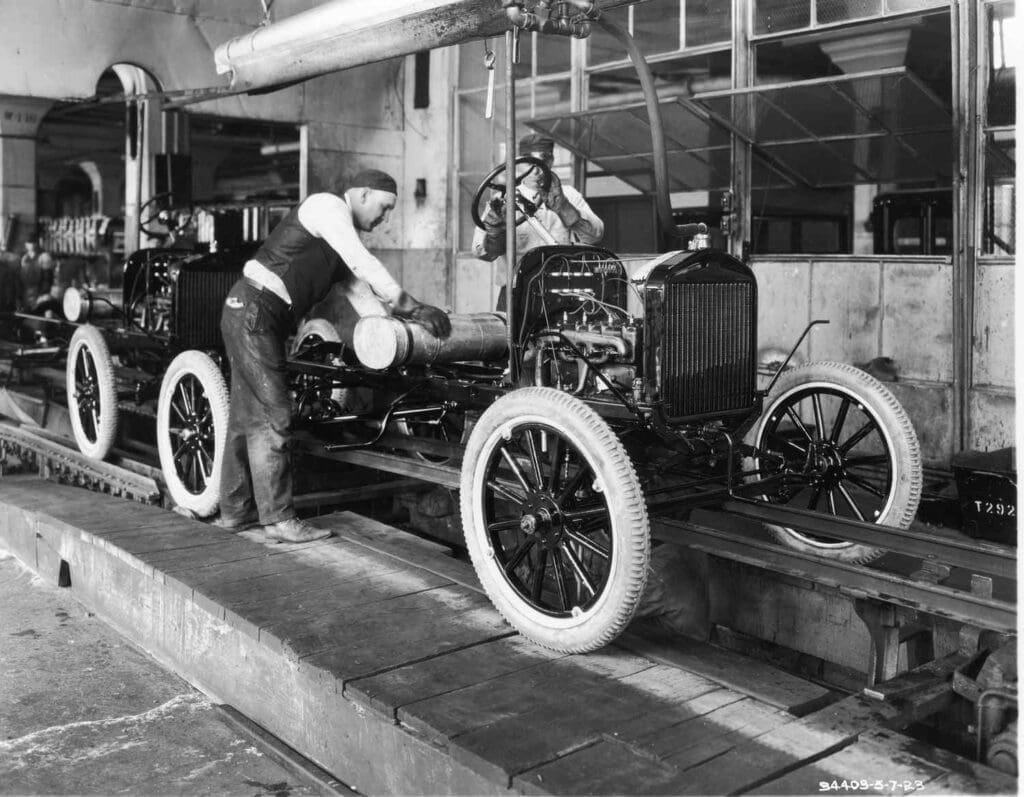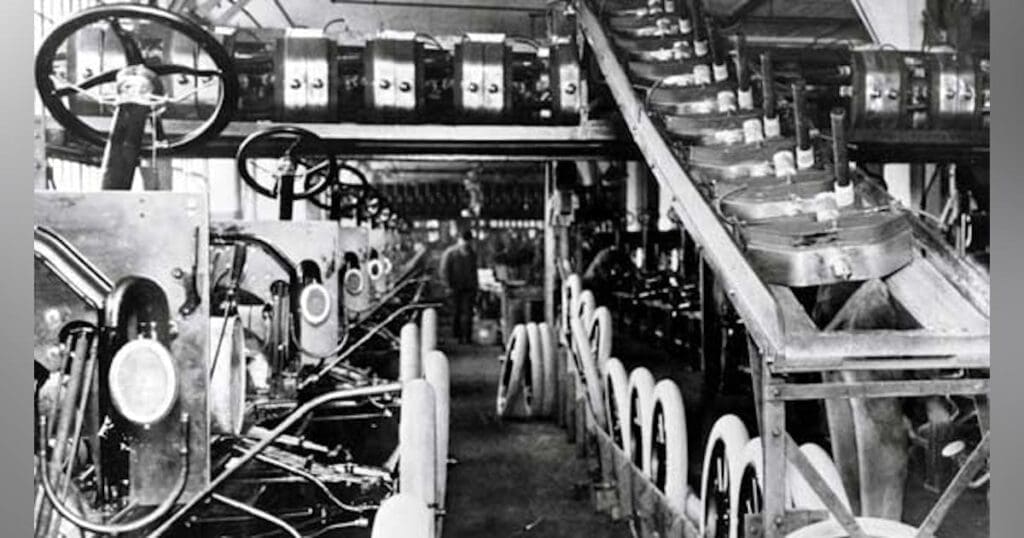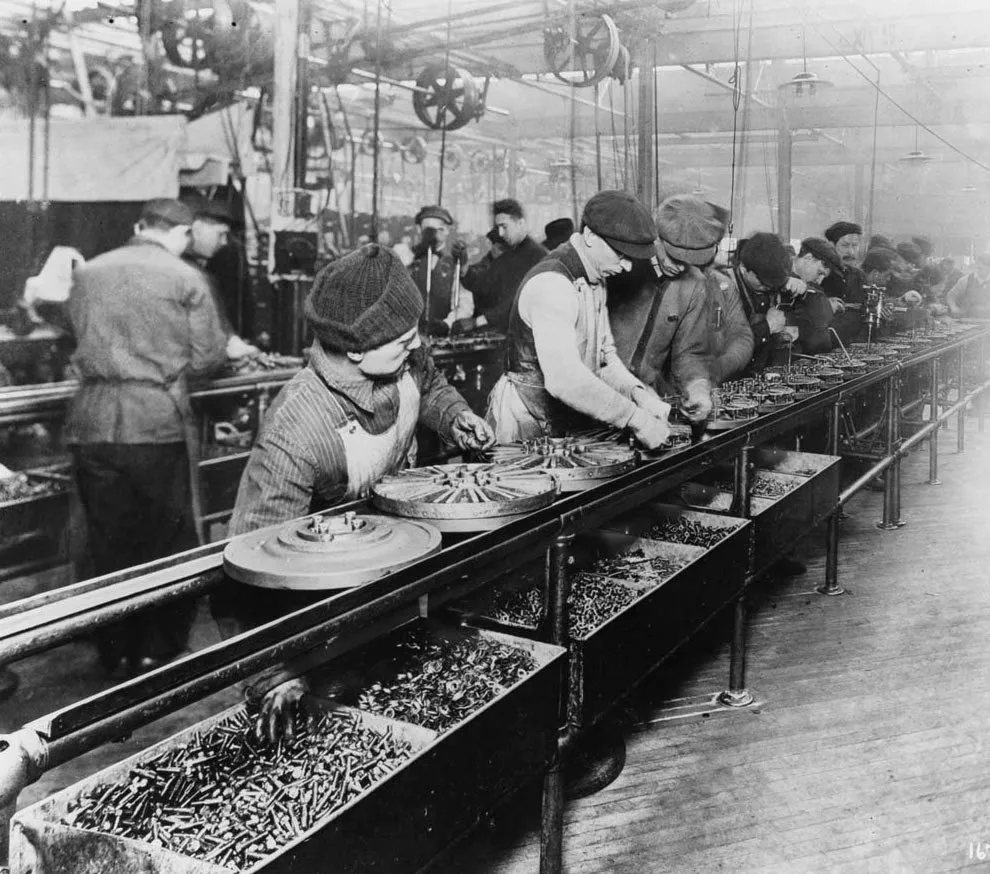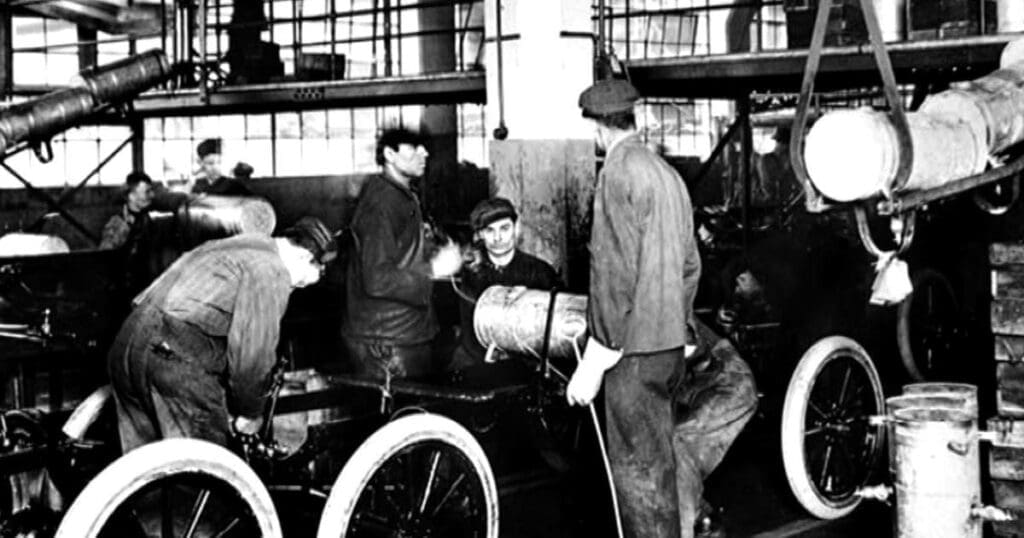In this article, you will discover the profound impact that Henry Ford had on labor and assembly line innovation. We will explore how Ford revolutionized the manufacturing industry with his innovative assembly line techniques, leading to increased productivity and reduced costs. Furthermore, we will delve into Ford’s groundbreaking approach to labor that not only transformed the workplace environment but also set new standards for workers’ rights and fair wages. Get ready to embark on a journey through history as we uncover Henry Ford’s lasting legacy in the world of business and manufacturing.
Henry Ford’s Early Career
Apprenticeship and early work
In his early years, Henry Ford demonstrated a natural curiosity and talent for mechanics. He began his career as an apprentice machinist at a small shop in Detroit, where he gained valuable hands-on experience working with engines and machinery. During this time, Ford developed a deep understanding of the inner workings of mechanical devices and honed his skills as a problem solver. It was clear that he had the potential to make significant contributions to the field of transportation.
Founding of the Ford Motor Company
In 1903, after several failed attempts at starting his own automobile manufacturing company, Henry Ford successfully founded the Ford Motor Company. This marked a turning point in his career, as he was now able to fully pursue his passion for revolutionizing the automobile industry. Ford’s vision was to create a car that would be affordable and accessible to the average American, and he knew that in order to achieve this, he would need to implement innovative manufacturing practices.
The Model T and Mass Production
Introduction of the Model T
In 1908, Henry Ford introduced the Model T, a vehicle that would go on to change the world. The Model T was the first automobile to be mass-produced on a large scale, making it more affordable for the general public. Its simplicity and durability, combined with a reasonable price tag, made it an instant success. The Model T quickly became a symbol of progress and mobility, allowing people to travel longer distances and expanding their horizons.
Development of the moving assembly line
One of Henry Ford’s most significant contributions to the manufacturing industry was the development of the moving assembly line. Prior to this innovation, automobiles were handcrafted by skilled workers, a time-consuming and expensive process. Ford revolutionized the manufacturing process by breaking it down into smaller, more manageable tasks. Each worker would specialize in a specific task and work on a moving conveyor belt, allowing for a continuous flow of production. This breakthrough reduced the time and cost of production, making the Model T even more affordable for the average American.

This image is property of www.thoughtco.com.
Labor Conditions Before Ford
Long working hours and low wages
Before Henry Ford’s revolutionary labor practices, workers in the automobile industry endured grueling hours and received meager wages. Many employees worked 10 to 12-hour shifts, six days a week, leaving little time for rest or personal activities. These long hours often resulted in physical and mental exhaustion, impacting the overall well-being of workers.
High employee turnover
Due to the demanding working conditions and low wages, turnover rates in the automobile industry were exceptionally high. Workers often sought better opportunities elsewhere, resulting in a constant need for hiring and training new employees. This constant turnover not only affected the efficiency of production but also created a sense of instability within the workforce.
Ford’s Revolutionary Labor Practices
$5/day wage
One of Henry Ford’s most striking and unconventional moves was the decision to pay his employees a wage of $5 per day, which was double the industry average at the time. This move was groundbreaking and had a profound impact on the lives of Ford employees. By paying workers a higher wage, Ford aimed to attract and retain skilled workers, reduce turnover rates, and promote employee loyalty and satisfaction.
Introduction of the 8-hour workday
In addition to the increased wages, Henry Ford also implemented the 8-hour workday, a significant improvement over the preceding long hours of labor. This change allowed workers to have more time for rest, family, and leisure activities. The shorter workday not only improved the well-being of Ford employees but also boosted morale and productivity.
Reducing employee turnover
Henry Ford’s implementation of higher wages and shorter workdays achieved more than just attracting and retaining skilled workers. It also significantly reduced employee turnover rates. Workers who were satisfied with their pay, working conditions, and work-life balance were more likely to stay with the company, creating a stable and dedicated workforce. This stability allowed for increased efficiency in the production process and improved quality control.

This image is property of img.industryweek.com.
Impact on the American Workforce
Rise of the middle class
Henry Ford’s revolutionary labor practices played a crucial role in the rise of the American middle class. By offering higher wages and shorter workdays, Ford provided opportunities for his employees to improve their standard of living. These improved conditions allowed workers to afford the products they were manufacturing, including the Model T itself. As a result, more Americans could now own their own cars and enjoy the benefits of mobility and convenience.
Increased consumerism
The affordability of the Model T, made possible by Ford’s innovative manufacturing techniques, led to a surge in consumer demand. As more people were able to own cars, there was a subsequent increase in the demand for related products and services, such as gasoline, roadside diners, and repair shops. This increase in consumerism stimulated economic growth and created new business opportunities across various industries.
Labor unions and worker rights
Henry Ford’s impact on the American workforce extended beyond his own company. His emphasis on fair wages and improved working conditions inspired other companies to reevaluate their labor practices. Workers across different industries began to unite, forming labor unions to advocate for better wages, hours, and benefits. Ford’s influence had a profound and lasting impact on the movement for worker rights, contributing to the establishment of important labor laws and regulations.
Assembly Line Innovation
Efficiency and productivity gains
Henry Ford’s introduction of the moving assembly line revolutionized the manufacturing process, resulting in increased efficiency and productivity gains. The division of labor and specialization allowed workers to become highly skilled in their specific tasks, leading to faster and more accurate production times. The assembly line allowed for a continuous flow of production, eliminating downtime between tasks and reducing the overall time required to assemble a car.
Standardization and interchangeability of parts
Another key innovation introduced by Henry Ford was the standardization and interchangeability of parts. Each component of the Model T was meticulously designed to be easily replicated and interchangeable with others. This meant that if a part needed to be replaced or repaired, it could be done quickly and without the need for custom-made components. This standardization greatly facilitated the assembly process and allowed for mass production on a scale never seen before.

This image is property of th-thumbnailer.cdn-si-edu.com.
Ford’s Influence on Other Industries
Adoption of assembly line methods
Henry Ford’s successful implementation of the moving assembly line quickly caught the attention of other industries. Companies in sectors such as agriculture, electronics, and furniture manufacturing began to adopt assembly line methods to enhance their own production processes. The assembly line became a symbol of progress and efficiency, setting a new standard for how goods were manufactured across various industries.
Impact on manufacturing around the world
The impact of Henry Ford’s assembly line innovation extended beyond the borders of the United States. Manufacturers worldwide recognized the potential of mass production and began implementing similar techniques in their own factories. Ford’s practices helped revolutionize manufacturing on a global scale, leading to increased productivity, lower costs, and improved efficiency for companies worldwide.
Legacy of Henry Ford
Ford’s lasting impact on industrial practices
Henry Ford’s contributions to the fields of labor and manufacturing continue to shape the way industries operate to this day. His focus on fair wages, reasonable working hours, and the well-being of his employees set a precedent for corporate social responsibility. Ford’s innovative manufacturing practices, particularly the moving assembly line, transformed the way products are made, making them more affordable and accessible for consumers.
Continued relevance in the modern era
While the manufacturing landscape has evolved significantly since Henry Ford’s time, his principles and innovative spirit remain relevant today. Companies continue to seek ways to increase efficiency, reduce costs, and improve worker well-being. Ford’s emphasis on continuous improvement, standardization, and innovation serves as an enduring inspiration for businesses worldwide.
In conclusion, Henry Ford’s impact on labor and assembly line innovation cannot be overstated. His visionary ideas and groundbreaking practices transformed the automobile industry, revolutionized manufacturing processes, and improved the lives of millions of workers. Ford’s legacy continues to resonate and serve as a testament to the power of innovation and compassionate leadership in driving positive change on a societal level.

This image is property of assets1.cbsnewsstatic.com.


